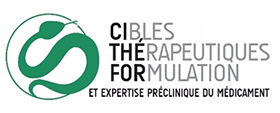L'article intitulé "Single-Cell Confinement on Micropatterned Glass: an AFM Topographical Profiling" vient d'être publié dans le journal "Langmuir".
Les auteurs sont : D. Pedroni, C. Gaucher, H. Alem
Doi : https://doi.org/10.1021/acs.langmuir.5c02609
Abstract :
In this study, we employed a surface micropatterning approach to isolate individual endothelial cells and examine how their topography is modulated by the available adhesion area. Human umbilical vein endothelial cells (HUVECs) were cultured on silanized glass substrates featuring bare-glass square islands of 15, 20, 25, and 30 μm per side. These defined geometries directed cell adhesion and spreading, allowing consistent atomic force microscopy (AFM) scanning across the entire surface of single and isolated cells. From the scans, we extracted key topographical parameters, including the average and root-mean-square (RMS) height profiles, root-mean-square slope (Sdq), as well as higher-order statistics such as kurtosis and skewness. A high-pass filter was applied to isolate local surface roughness from overall cell shape. Our quantitative analysis revealed that cells confined to 15 and 20 μm patterns exhibited significantly greater average height (p < 0.05) and surface roughness (p < 0.05) compared to those on 25 and 30 μm patterns. Peak cell heights on the 15 μm patterns were, on average, twice as high as those on the 25-30 μm patterns, while the mean cell height was approximately four times greater on the smaller (15-20 μm) patterns relative to the larger (25-30 μm) ones. Roughness was also markedly increased by nearly a factor of 2 for cells on 15 μm patterns compared to those on 25-30 μm. Additionally, the root-mean-square slope (Sdq) was significantly elevated on the smaller patterns (p < 0.05). Higher-order statistical moments further indicated a shift in height distribution: from platykurtic profiles on the 15 and 25 μm patterns to strongly leptokurtic and positively skewed profiles on the 30 μm patterns (p < 0.05). This transition suggests a flatter, more regular surface morphology and a more uniform volumetric distribution on the larger adhesive areas. These findings demonstrate that combining micropatterning with AFM might provide a robust platform for single-cell studies, offering enhanced reproducibility and deeper insights into how controlled cell shape modulates surface properties.

